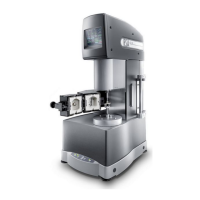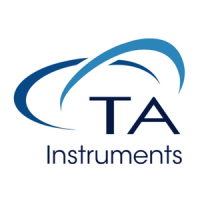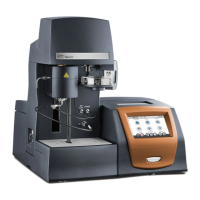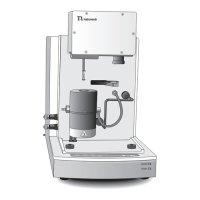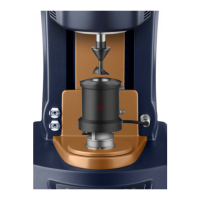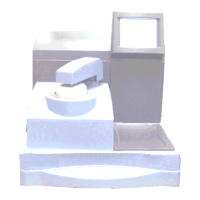AR 2000 Operator's Manual
11
Chapter 1
Introducing the AR 2000
Overview
The TA Instruments AR 2000 Rheometer is a controlled stress/controlled rate rheometer capable of handling
many different types of samples, using a range of geometry sizes and types.
This manual relates to all hardware aspects of the AR 2000 Rheometer. For complete information on the
operation of the instrument, you may also have to refer to the relevant software manuals supplied with the
instrument.
This chapter describes some important safety information. Please read this information thoroughly before
proceeding.
Warnings
Please make sure that you read the following warnings BEFORE using this equipment. This section contains
information that is vital to the safe operation of the AR 2000.
WARNING: This equipment must not be mounted on a flammable surface if low
flashpoint material is being analyzed.
WARNING: An extraction system may be required if the heating of materials could
lead to liberation of hazardous gasses.
WARNING: It is recommended that this instrument be serviced by trained and skilled
TA Instruments personnel at least once a year.
WARNING: There may be a danger of explosion if the lithium battery is incorrectly
replaced. It should be replaced only with the same type, contact TA Instruments for
information. Dispose of used batteries according to the battery manufacturers instruc-
tions. If in doubt, contact TA Instruments.
WARNING: The material used on the top surface of the Peltier plate is hard, chrome-
plated copper and the material used for the 'skirt' of the Peltier is stainless steel.
Therefore, use an appropriate cleaning material when cleaning the Peltier plate.
WARNING: The internal components of the AR 2000 ETC are all constructed from
chemically resistant materials, and can therefore be cleaned with standard laboratory
solvents. The only exception is the cladding for the thermocouples, which should not
be immersed in a solvent for long periods. Use a small amount of solvent on a soft
cloth and wipe the soiled area gently. This procedure should never be conducted at
any temperature other than ambient.
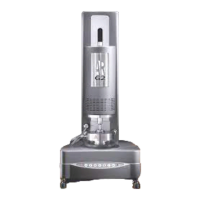
